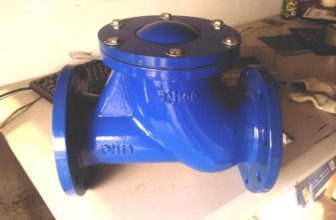[ad_1]
Check valve refers to a valve that actively opens and closes the valve flap by relying on the activity of the medium itself to avoid the backflow of the medium, also known as check valve, one-way valve, reverse flow valve, and back pressure valve. The check valve belongs to an active valve, and its primary effect is to avoid the backflow of the medium, the reversal of the pump and the drive motor, and the discharge of the container medium.
Check valves can also be used on lines supplying auxiliary systems where the pressure may rise above system pressure. Check valves can be mainly divided into swing check valves (rotating according to the center of gravity) and lift check valves (moving along the axis). The effect of this type of valve is to allow the medium to move in only one direction and block movement in the opposite direction. Usually this kind of valve works actively. Under the effect of fluid pressure moving in one direction, the valve flap opens; when the fluid moves in the opposite direction, the fluid pressure and the self-coincidental valve flap of the valve flap act on the valve seat, and then cut off the movement. Among them, the check valve belongs to this type of valve, which includes swing check valve and lift check valve. Swing check valves have a hinge mechanism and a door-like disc that rests freely against the slanted seat surface. In order to ensure that the valve disc can reach the proper position of the valve seat surface every time, the valve disc is designed in the hinge mechanism, so that the valve disc has sufficient swing space and makes the valve disc truly and comprehensively touch the valve seat. The disc can be entirely made of metal, or it can be inlaid with leather, rubber, or composite cover, depending on the performance requirements. With the swing check valve fully open, the fluid pressure is virtually unrestricted, so the pressure drop across the valve is relatively small. The disc of the lift check valve is located on the sealing surface of the valve seat on the valve body. Except that the valve disc can rise and fall freely, the rest of the valve is like a globe valve. The fluid pressure lifts the valve disc from the sealing surface of the valve seat, and the backflow of the medium causes the valve disc to fall back to the valve seat and cut off the movement. Depending on the application conditions, the disc can be an all-metal structure, or it can be inlaid with rubber pads or rubber rings on the disc holder. Like the globe valve, the passage of the fluid through the lift check valve is also narrow, so the pressure drop through the lift check valve is larger than that of the swing check valve, and the flow of the swing check valve is restricted. rare.
Check valve experimental status: the axis of the lift check valve disc is in an orientation that is straight with the horizontal; the axis of the swing check valve channel and the disc axis are in an orientation that is approximately parallel to the horizontal line.
In the strength test, the test medium is introduced from the inlet to the specified value, and the other end is closed, and it is qualified to see that the valve body and valve cover have no leakage.
In the sealing test, the experimental medium is introduced from the outlet end, and the sealing surface is checked at the inlet end, and no leakage at the packing and gasket is qualified.
[ad_2]





